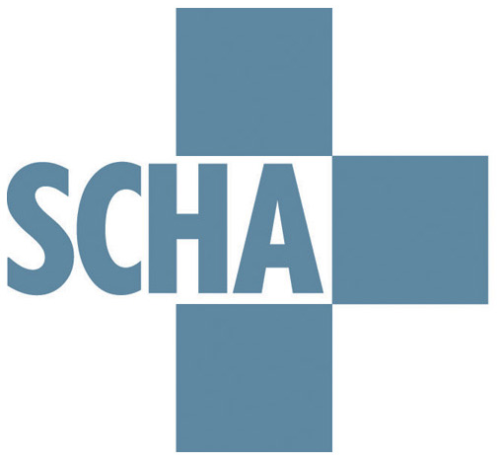As the COVID-19 pandemic continues to unfold, hospitals and health systems have had to adapt and find new ways to continue delivering care while keeping patients safe. To find out how one system is changing their ambulatory care, Senior Consultant Kingsley Mooney sat down for a conversation with Dr. Peter Zwerner, a member of Knowledge Capital Group’s Clinical Advisory Board.
Dr. Zwerner is a Cardiologist and the Chief Medical Officer of the Medical University of South Carolina [MUSC] physician practice, as well as the Co-Chief Medical Officer of MUSC Integrated Health System. He is a member of the Executive Leadership Team of MUSC Health and has held various leadership positions within the system. Dr. Zwerner joined KCG’s Clinical Advisory Board earlier this year.
Read or watch the conversation with Dr. Zwerner below to learn more about MUSC’s shift to telehealth and his views on what the future may hold as we emerge from the COVID-19 crisis. In a few weeks, we will sit down with Dr. Zwerner again to really understand the nuts and bolts of their rapid transformation to telehealth and review some lessons learned along the way.
Conversation has been edited for length and clarity
Kingsley: Hi, Dr. Zwerner! Thank you so much for joining me today. It’s nice to sit down with you virtually. I hope all is well.
Dr. Zwerner: Yes, thank you. It’s nice to see a familiar face. It’s a whole new world every day.
Kingsley: Yes, it is. We wanted to have you here today to just get a little perspective on what’s going on at MUSC and how you all are facing some of the realities given everything that’s going on with COVID-19. Before we get started, I would love if you could just give a brief introduction on your role and responsibilities, particularly around your leadership responsibilities at MUSC.
Dr. Zwerner: Yes. My name is Peter Zwerner, I’m a cardiologist and I also hold the title of Chief Medical Officer here at MUSC. My focus has been on our ambulatory care. We have about 1200 providers spread out at well over 100 different sites and we see over 1.5 a million encounters a year. It’s a very, very robust active enterprise, and certainly this COVID pandemic has forced us to rethink how we deliver care in that environment and it’s been a very exciting time for us here at MUSC.
I’m also involved in our senior leadership for the institution, in terms of our preparedness for the COVID epidemic on the inpatient world and helping set up remote sites. We are looking to almost double our capacity and that’s been a very interesting challenge in terms of equipment and resources.
Kingsley: Great, thank you so much! So, let’s focus on the ambulatory care sites first. How have they been impacted by everything going on with COVID?
Dr. Zwerner: Well again, as soon as we saw what was happening on the world scene, we realized that we needed to protect our patients and protect our staff first. The whole social distancing and trying to avoid unnecessary visits and contacts became paramount concern for us.
On the other hand, we knew we had to see some segment of our patient population who needed urgent or semi-urgent care. Certainly, keeping people out of the emergency room was something we were really trying to promote.
Then, since we have such complex patients in an academic medical center, we had many patients that still needed ongoing care, just not in an urgent fashion. So, we had to grapple with how we could deliver that care, and still keep everyone safe in this new world we’re living in.
Kingsley: So, how are you delivering that care to those patients that still need primary and specialty care services?
Dr. Zwerner: Well, again, in order to so-called flatten the curve, we decided we had to immediately, in very short order, develop some programs for that care. We did some work in terms of consolidating our clinical footprint in order to accommodate the in-person visits in a much smaller brick and mortar space, which helped us use our resources much more efficiently.
Then, fortunately, MUSC is a national leader in telehealth, and we already had an existing telehealth platform. It was very interesting – although we are statewide and have many thousands of visits a week in telehealth, it really wasn’t a platform that could easily overnight be turned into 1.5 million visits a year. We had to understand, how do you convert this into something that’s manageable? That was a very interesting challenge, particularly when we started peeling the onion back, we realized there were rarely several dozen functionalities that all had to interrelate in order to make a widespread rollout of telehealth program successful.
So, we tackled that, put in 14-hour days with lots, and lots of input, and began to develop that program.
Kingsley: So, through that rapid transformation, what are some of those factors that you think are critical for it to be successful in the short term, and then again, in the long term?
Dr. Zwerner: Well, there were a lot of lessons learned along the way. The analogy people have been using is we’re building the airplane while it’s flying, and I think that really is the feeling that we have – sort of like changing the engines on a 747 while it’s in flight.
We came up with a high-level steering committee. We realized that we had to keep it simple, we had to be nimble, and we had to be flexible. Those were some of the key elements that were going to make us successful. We started looking at the elements, we worked on role clarity, we worked on some of the virtual clinic and video platforms that we were going to need.
We understood we needed this robust adoption of this, so that would involve a significant amount of training and educational material. We involved all our technology folks from applications and all the other aspects of our information systems to look at all the different supports that were necessary. Along with a robust training mechanism, we started developing help desks and command centers, and then had a communication plan around it. We rolled our finance and compliance and coding people in because it was an ever-changing environment here in telehealth in terms of reimbursement. We’ve sort of been catapulted into a more modern reimbursement, some of the CMS changes have really supported telehealth as a platform.
So that’s a big mouthful with a lot of details behind it, but I think it captures that direction we took.
Kingsley: Well, it just goes to show that you need so many different parties involved in the process because there’s so many nuances to not only building the platform that is going to be successful, but ensuring that it’s implemented and optimized. So, that gets me to my next question, how have the physicians been engaged in this process? Have you seen them be more open to this at all, given everything that’s going on with Corona and how it may be impacting their day-to-day activities with patients?
Dr. Zwerner: Yeah, it’s a very interesting change management to do. We took what probably would’ve taken at least six months, if not a year and involved hundreds of people and crammed it into a couple of weeks. The physicians, to their credit, really embraced this change. They realized, first and foremost, we’re here to serve our patients, and this was the way we can do it. They understood that we are being catapulted into the 22nd Century overnight, and that the plans always were to move to these kinds of platforms, we just didn’t imagine we’d ever do it so quickly.
The key for us is to get the physicians involved and take advantage of their intellectual capital and learning from each other. We put a very large and robust physician advisory group together. We had pockets of our specialists that really took this on in earnest and developed internally and organically many of their own processes, and then we started building on those and sharing those in this advisory group. Then, we made the advisory group a key component of our steering committee so that we kept the physician voice in mind as we evolved our program.
We’ve seen an exponential uptake of telehealth in that environment, and once people dip their toe in the water they find that it’s really quite doable and rather interesting. I had my telehealth clinic this morning, and I will say it was a little odd seeing all of my old friend patients on the phone, but the connection, the smile, the joking really felt good, and it was really heartwarming to get back to what we do, taking care of people.
Kingsley: That’s great, and once we – whenever we – get out of this COVID world that we’re living in right now, how do you see this telehealth platform extending into what we think about care delivery models in the future? Do you think that it’s here to stay, or do you think everybody will revert back to that inpatient brick and mortar clinic experience?
Dr. Zwerner: I think the brick and mortar days are over for both providers and the patients. The flexibility, no more long boring, waiting rooms reading, five-year-old Parade magazines, no more parking issues, flooding issues. For the patients that need routine care, a large percent of what you do you can do over the phone.
What I’m excited about is that this will catapult all of the remote technologies into being. People will have home blood pressures, home EKGs, we’ll be developing more small imaging devices. You can already do ultrasounds on your heart with an iPhone. So much care will start taking place in the living room environment rather than the waiting room environment.
I really see a quantum shift in how we deliver healthcare, we won’t go back. It’s too expensive, it’s too unpleasant. The old system of ambulatory care really hasn’t changed in 50 years, from the time even my father was getting care, and this is really the quantum shift that’s going to move us into the future. It’s really quite exciting when you think about it.
Kingsley: It is, and it’s sad that it took a pandemic to kind of spur this innovation. I see that a lot of hospitals are taking this initiative of developing their telehealth platforms, and it seems like CMS and the payers are starting to get on board, but it’s sad that it had to get to this point to really spur all of that activity.
Dr. Zwerner: It is, it is. And I think the payers are a big part of the impediment, they are really unwilling to understand the value. They all knew that our old system didn’t work well for patients, providers, staff, but we just couldn’t get out of our own way. I hope we don’t revert, that would be that would be really unfortunate if that’s what happened. It’s sort of like a lot of technology, once it’s adopted – you know, the handheld phones and the internet – there is no turning back. The door is open and that’s the way it’s going to be
Kingsley: Then it will hopefully only evolve from here.
Dr. Zwerner: Yeah, and sometimes I use the quote “never let a good crisis go to waste” because you can take advantage of these very difficult situations and feel like you’re having an impact. I feel very fortunate as a physician, I get that still come to work every day and feel like I’m contributing and interact. I know so many people are home and they’re worrying and they feel helpless, so it’s it really is an honor and a privilege to be able to move us forward in a constructive manner during such a terrible period for all of us.
Kingsley: Well I know that we appreciate what you’re doing – in your leadership role and as a physician – and how you’re continuing to drive innovative care delivery to patients in need. It was great to hear what you have going on at MUSC, it sounds like there’s only upward momentum from here. We will continue to keep in touch with you to see how it rolls out over the next couple of weeks and months, as we continue to face these COVID challenges across the industry. Thank you so much for your time!
Dr. Zwerner: Great to connect, thank you so much! Have a great day, bye now.







